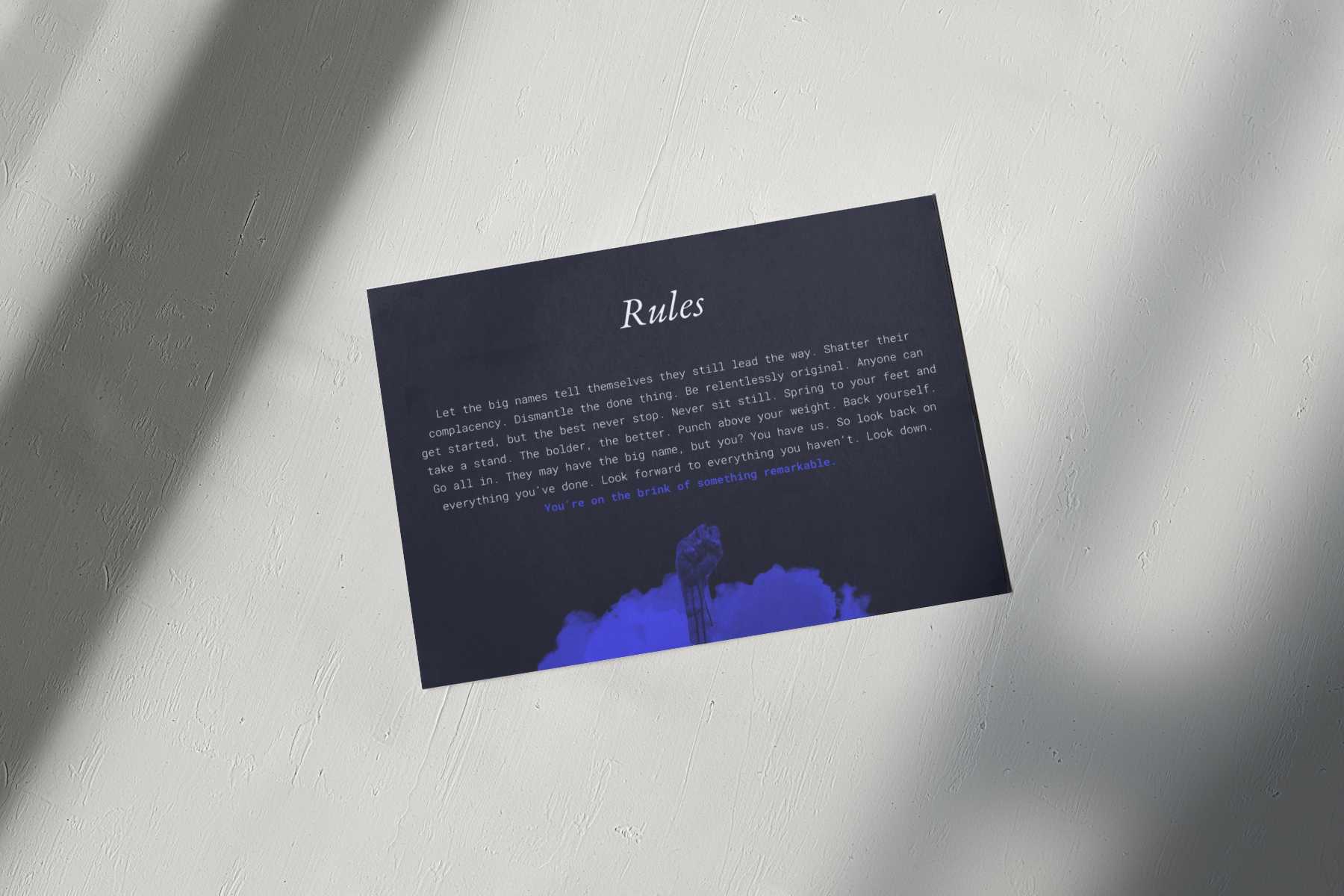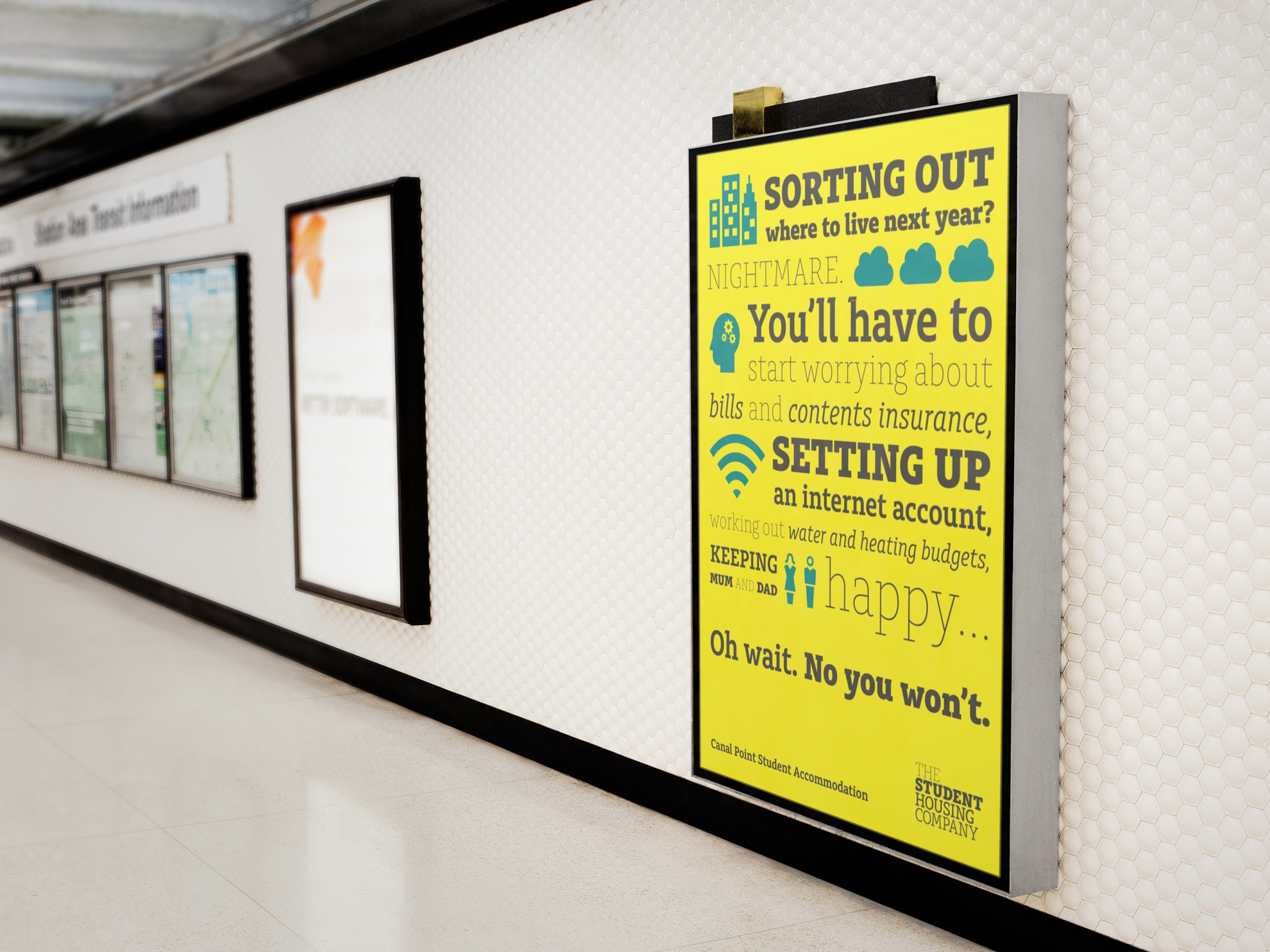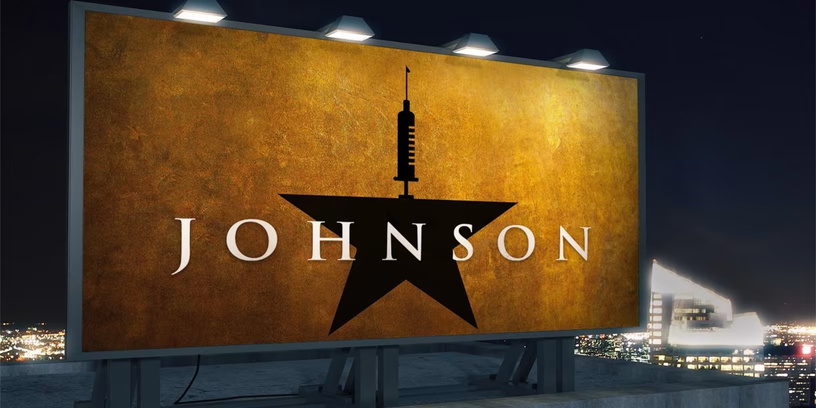Joe Walsh.
Copywriter & Editor.


Hello.
This is me: Joe, a copywriter and editor with a decade's worth of experience writing for startups, blue-chips and everything in between. I even found time to establish and lead the editorial team at Finimize, a financial news startup that sold for nine figures in 2021.
All this experience has given me a rare mix of skills: relentless creativity, unimpeachable standards, a go-get-'em-tiger attitude and nothing less than a heart of gold.
Publicis Sapient. Senior Associate Copywriter.
Finimize. Editorial Lead.
Relic. Freelance Copywriter.
The Croc. Senior Copywriter.
Ascendant. Copywriter.
IG. Copywriter.
MoneyWeek. Junior Copywriter.
Testimonials.
"Joe developed our tone of voice into something hundreds of thousands of people want to read. He gave them a moment of joy when they came to Finimize, and he never accepted mediocrity from himself or any of us."
"Watching Joe work is a thing of beauty. The amount of care, time and precision he puts in is truly inspiring, and it's at the core of how such a small team has been able to achieve such amazing things."
"Joe is a first-class writer and editor, with the rare gift of being truly funny in print. Even better, he's become really effective at scaling his talents across a pool of writers and editors."
Carl Hazeley.
VP Content, Finimize.
Kieron Banerji.
Director of Content, Delphia.
Andrew Rummer.
Editor-in-Chief, Digital Frontier.
"Joe is simply the best at his job. Period. But the best of all? He raises the bar for everyone else. Working with him, I've learned that even the smallest details matter, and removed 'good enough' from my vocabulary."
"A year of being managed by Joe is the equivalent of a master's degree in copywriting, four years of working elsewhere, and six months of improv comedy classes combined."
"Joe is as passionate and dedicated a writer as I have ever had the pleasure to work with. His understanding of what makes copy great is matched only by his appetite for learning and improvement."
Stéphane Renevier.
Analyst, Finimize.
Naomi Prakash.
Junior Editor, Finimize.
Nick Higgins.
Head of UK Marketing, IG.
Creative.

The AA.
Brief. Create bold, empathetic copy for The AA's theory test app, introducing a new generation of drivers to the rules of the road.

Blu.
Brief. Connect with Blu's target market of millennial "next-steppers" via a series of email flows, from onboarding to winback.

Canon.
Brief. Catch the discerning eye of aspiring photographers with must-read promotional emails and newsletters.

Ascendant.
Brief. Refresh creative agency Ascendant's brand from the bottom up, across client outreach, web, social and more.

The Student Housing Company.
Brief. Make prospective tenants feel at home before they ever come to stay.

Soldo.
Brief. Promote Soldo's business expense cards with a path-less-trodden approach.

Stitched.
Brief. Roll out a shoestring campaign across web, social and email to bring houseproud homebodies into the fold.
25% increase in mailing list
60% increase in weekly consultations
30% increase in weekly blog visits
Finimize.
Brief. Define a tonal and visual identity that makes readers actively, unironically look forward to an update on inflation and interest rates.


J&J is not throwing away its shot
How long can this investing renaissance last?
175,000 > 600,000 daily newsletter subscribers
29% > 47% average open rate
0 > 65,000 paid app users
2 members of team content > 11 members

The Fed's package isn't nearly as big as it claimed



Facebook's new look ain't fooling anyone
Will Elon kill Twitter?
Sony's getting into the EV game
Editorial.
Meta can rebrand, but it can't hide.
What's going on here?
The US filed lawsuits demanding that Meta breaks up once and for all on Wednesday.
What does that mean exactly?
In two separate lawsuits, the antitrust regulator and almost every US state alleged that Meta has a monopoly in the social networking market. They’re claiming the company has either bought or tried to buy smaller firms in a bid to snuff them out before they get a chance to live up to their competitive potential. More specifically, they’re targeting two of Facebook’s flagship acquisitions – Instagram and WhatsApp – in hopes the company will be forced to unwind them altogether.
Meta, for its part, invoked the playground-legislated “no takey-backsies” statute: the company pointed out that both acquisitions were approved in 2012 and 2014 by the very same regulators now suing them, and that this whole thing is just an excuse for a do-over.
Why should you care?
Investigations into Big Tech are launching left, right and centre these days, but this lawsuit makes Meta the first of the bunch to be hit with a breakup order. Investors might want to keep things in perspective, mind you. If lawmakers' last notable attempt to break up a company – namely Microsoft in 1998 – is anything to go by, this whole saga will be like a night with Zuck: a slow process with a very anticlimactic ending.
Made.com plans to get comfy on the UK stock market.
What's going on here?
Made.com announced this week that it’s planning to make its stock market debut on the London Stock Exchange.
What does that mean exactly?
If this pandemic has made us connoisseurs of anything, it’s sitting, sleeping and curling up in the foetal position as we sing “The sun’ll come out… tomorrow…” through broken sobs. So it makes sense that out of the ashes of this sedentary lifestyle, Made should’ve emerged keener than ever to debut on the UK stock market.
The company’s plan is to reinvest the money it makes from the IPO into the business, quadruple its annual sales by the end of 2025, and expand beyond its current Europe-centric focus. The paperwork didn’t mention what valuation Made's targeting, but reports have put it at around $1.4 billion. That’s both three times last year’s sales and ahead of long-term German rival Westwing.
Why should you care?
This has come at a good time for the UK, where last quarter’s record number of IPOs has been drying up fast. As for why, pick your poison: inflation-fueled market turbulence, the souring mood towards high-growth companies, or the profound disappointment of Bumble, whose recently listed shares have already dropped below their IPO price. As long as there’s the potential for a lukewarm reception, after all, companies aren’t about to risk selling their shares on the cheap.
Hold on. Why were investors so keen on the Fed's latest hike?
In the biggest one-off increase in 22 years, the Fed raised interest rates by half a percentage point yesterday. And while investors usually clutch their pearls at the faintest hint of higher rates, they'd sent stocks almost 3% higher by the end of the day – the biggest gain on the day of a Fed announcement in over a decade. That begs two questions: why did stocks rise, and why did they rise so much?
The first is simple enough to answer: a rate hike of that size was actually cause for celebration. Investors came into this update anxious that the Fed would, if anything, hike rates more than expected, potentially even opting for a 0.75 percentage point uptick. So when the central bank pulled its punches, investors rolled with them.
As for the size of the gain, it’s probably down to the fact that investors have been feeling increasingly pessimistic recently, with high inflation and rising rates casting a shadow over the whole market. When everyone’s expecting the worst, any hint of positive news can have an outsized impact. That seems to be what's happened here.
Of course, nothing’s really changed: the Fed still has to go hard on rate hikes, and higher rates are still damaging to both economic growth and stocks. So while investors may have taken this as a victory, remember that it's just one battle: there’s a full-scale war ahead of us.
Bitcoin isn't going back to the moon anytime soon.
Bitcoin's value has fallen another 20% in May, which means it's now 55% down from its November peak - the fifth-ever drop of this size. But if you're rushing to catch the dip, feel free to take your time: bitcoin can spend an awfully long time licking its wounds.
The OG crypto, after all, tends to have these "saucer-shaped" recoveries that look very different from the "V-shaped" bouncebacks you tend to see in traditional markets. Bitcoin, put simply, has barely moved for at least 180 days after every other drawdown of this size in history. So even if you'd bought in early, you'd have made next to nothing for months.
It's not entirely clear why bitcoin languishes for so long, but there is one popular theory. The bitcoin market is much smaller than traditional markets, meaning its biggest buyers - "whales" - have much more influence over its price. They exert this influence in multiple ways, but in this case, to keep its price low after the dip.
It's in their interests to do just that: if they were to, say, try to buy 10,000 bitcoin right off the bat, their order wouldn't be fulfilled there were enough sellers to meet their demand. And when there eventually were, the price they'd pay might be far less favourable than the one they wanted. But if they can keep bitcoin's price low, stock up gradually, and wait for enough sellers to come out of the woodwork, they could buy huge quantities further down the line. That would drive up the price of bitcoin, and take their new stockpile with it.
So if that's their motivation again here, you can rest easy knowing that you're not the Wile E. Coyote to bitcoin's Roadrunner in this situation. Just lie back on a deck chair, and watch as the OG crypto keeps running headlong into a tunnel painted on a brick wall.
Digital vs. traditional art: which should you back in 2023?
Cast your mind back to 2020, when a global population of thumb-twiddlers was looking for something – dear lord, anything – to occupy itself over lockdown. With cash to burn and excitement a priority, people flocked to invest in NFTs and, in turn, pushed the digital tokens into the mainstream.
Fast forward to 2022 and NFTs were barely a footnote in the cultural conversation, with monthly spending collapsing almost 90% between March and November. This, even as a chaotic global economy propelled traditional art investment to new heights. So as we head into a new year, it begs the question: what might 2023 look like for the two markets?
NFTs are real art, actually
To be clear, we’re not sneery about NFTs here at Mintus HQ. For one thing, digital and physical art isn’t as far apart as traditionalists like to argue: they’re both subjective, non-replicable works that are only as valuable as buyers decide. Even Damien Hirst has leaned into the overlap, offering collectors the choice of an NFT or physical version of his recent work “Currency”.
Second, if we put aside the likes of Beeple’s “Everydays: The First 5000 Days” (which sold for $69 million in March 2021), the NFT market has got one thing very right: it democratised art investing in a world where it’s been the preserve of the privileged few. No matter what you think of NFTs’ cultural or investment potential, the idea that you shouldn’t need to own a private jet to buy into art sounds pretty appealing to this fractional art platform.
All that being said, there is one difference between the two markets you simply can't deny: NFTs’ rapid hype-to-crash trajectory is a far cry from traditional art's tireless uptrend.
[...]
Thanks. This has been nice.
jwalsh278@gmail.com.
07540 436459.
